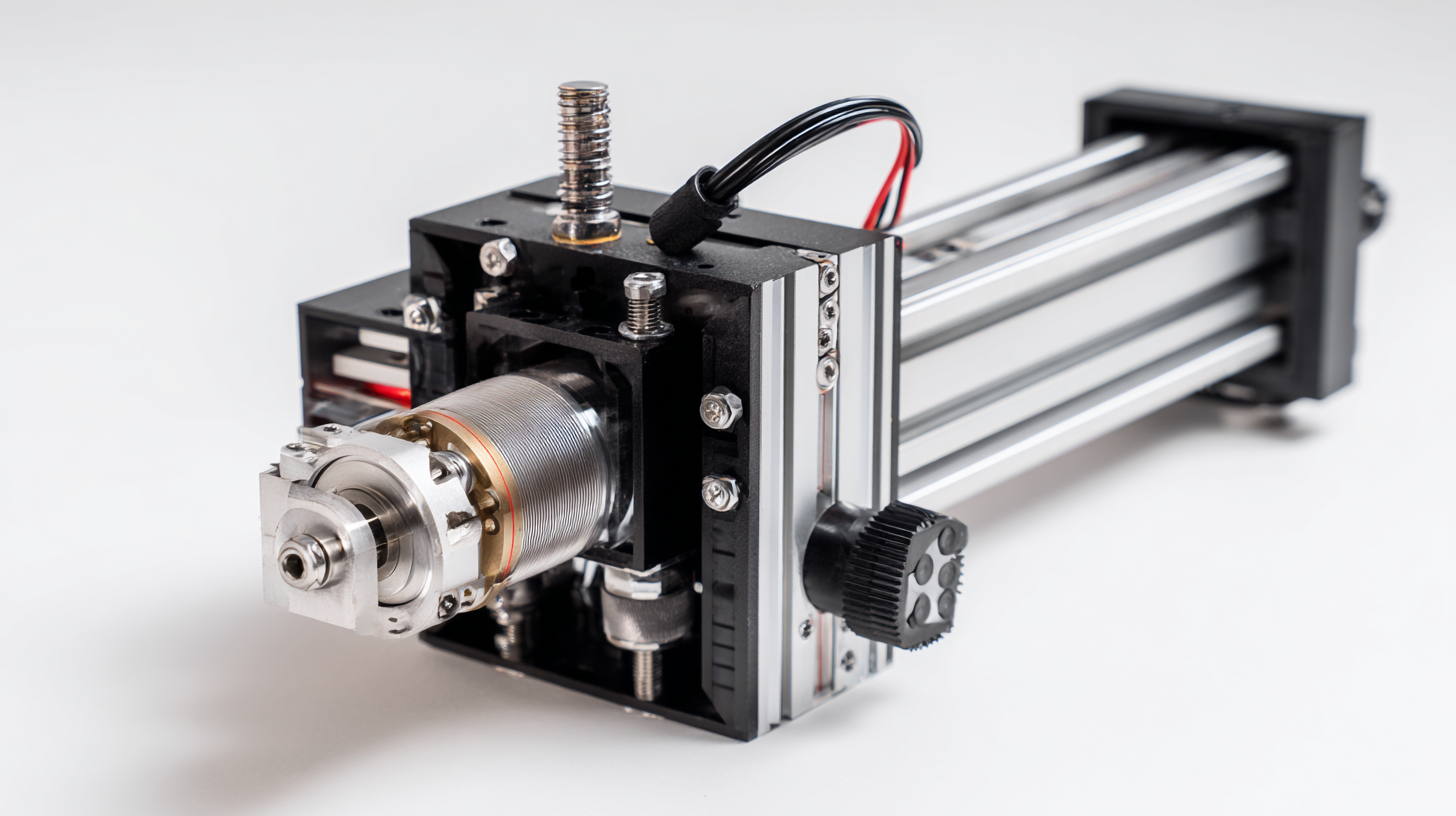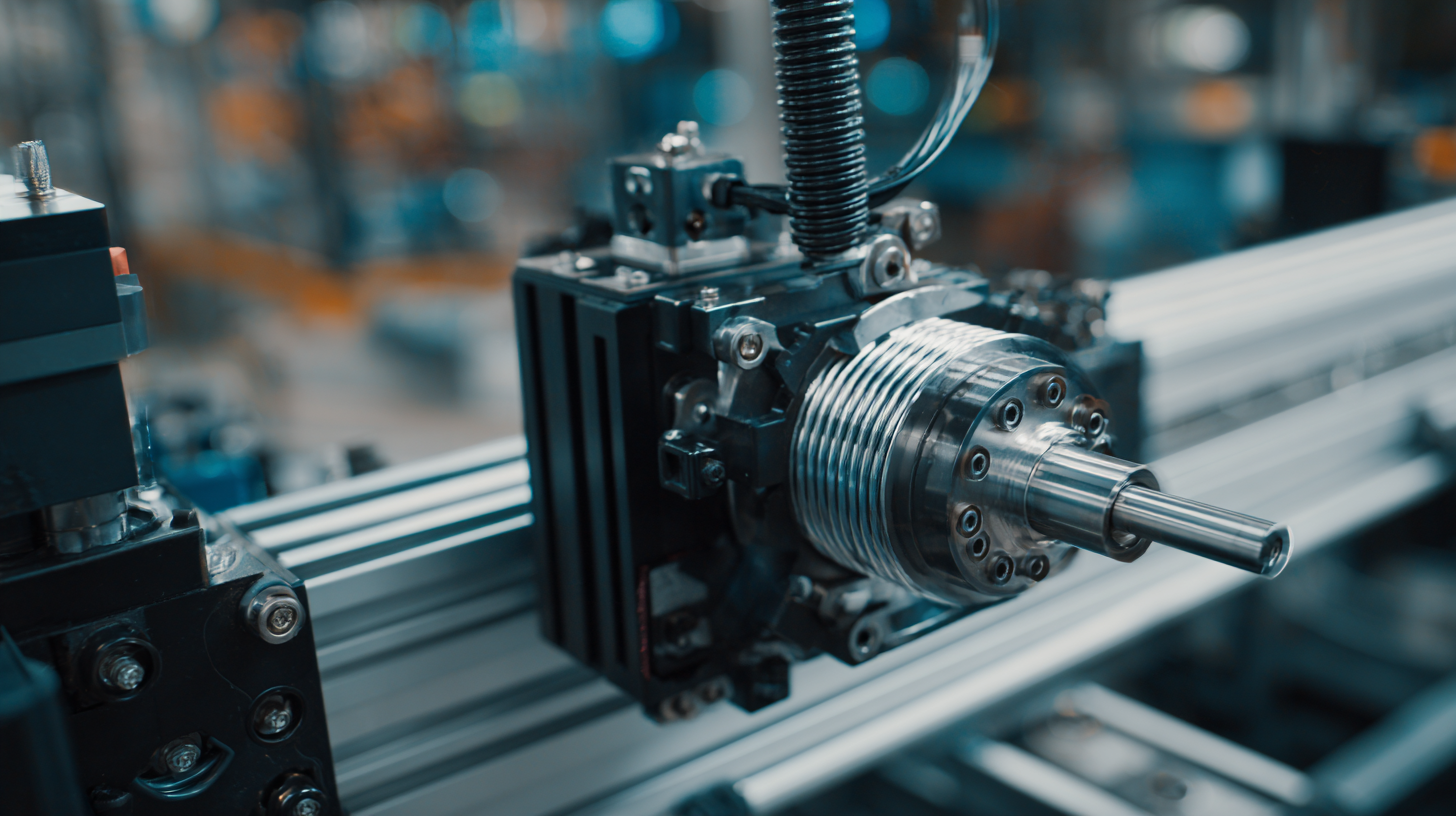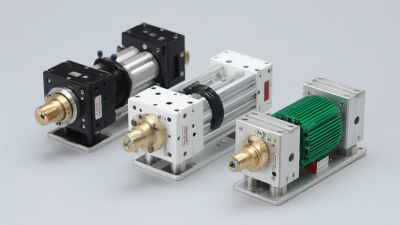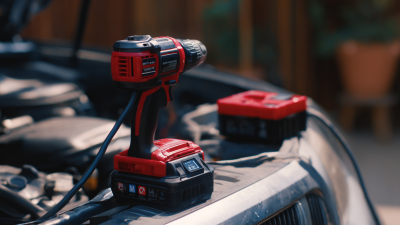Main Menu
The advancement of motion control technologies has become a pivotal factor in driving automation across various industries. Among these technologies, the motion control stepper motor stands out for its unparalleled precision and reliability. According to a report by MarketsandMarkets, the global motion control market is projected to reach $28.18 billion by 2025, growing at a CAGR of 6.5% from 2020 to 2025. This growth is largely fueled by the increasing demand for high-precision automation solutions in manufacturing, robotics, and medical devices. Stepper motors, known for their ability to achieve precise positioning and repeatability, are transforming automation processes by enabling sophisticated control in applications such as CNC machinery and 3D printing. As industries continue to seek enhanced efficiency and accuracy, the role of motion control stepper motors in shaping the future of automation becomes increasingly significant.

Stepper motors have emerged as a cornerstone of modern automation technology, significantly enhancing precision motion control in various applications. Their ability to maintain accurate positioning without the need for feedback systems makes them indispensable in fields such as robotics, manufacturing, and medical devices. The global market for stepper motors, specifically the can stack type, is expected to see substantial growth, projected to rise from USD 591.1 million in 2025 to USD 1.028 billion by 2035, reflecting a compound annual growth rate (CAGR) of 5.6%. This upward trend emphasizes their critical role in driving automation forward.
Tips for Implementing Stepper Motors:
1. Consider your application requirements carefully to determine whether stepper motors or other motor types can achieve better performance.
2. Stay updated with the latest control technologies and integration methods as the field constantly evolves, ensuring your systems remain competitive.
Innovation in stepper motor technology is being fueled by major industry players, who are consistently developing advanced solutions that cater to the ever-increasing demand for efficiency and precision. As automation technology continues to advance, stepper motors will undoubtedly play a pivotal role in shaping the future, promising enhanced capabilities and streamlined operations across various sectors.
Stepper motors are increasingly becoming a cornerstone of precision applications in automation, thanks to their unique operational characteristics. According to a recent report by MarketsandMarkets, the global stepper motor market is projected to grow from $3.5 billion in 2021 to $5.1 billion by 2026, reflecting a CAGR of 7.7%. This growth is largely driven by the demand for higher efficiency and accuracy in various sectors, including robotics, medical devices, and CNC machinery.

One of the key advantages of stepper motors is their ability to maintain precise control over position and speed without the need for feedback systems. This inherent capability reduces complexity in automation systems, allowing for seamless integration and simplified programming. The same MarketsandMarkets report indicates that applications requiring high-resolution movements, such as 3D printing and semiconductor manufacturing, can achieve accuracy levels of up to 0.1 degrees. Additionally, their energy efficiency — often exceeding 80% compared to conventional motors — makes them an attractive choice for industries looking to minimize operational costs while maximizing performance.
As stepper motors continue to evolve with advancements in technology, their role in revolutionizing automation is only set to grow.
The integration of stepper motor technology is driving significant innovation across various key industries, particularly in automation, robotics, and manufacturing. With their ability to provide precise control of movement, stepper motors are enhancing efficiency and accuracy in applications that demand high levels of precision. Industries such as pharmaceuticals, automotive, and consumer electronics are increasingly utilizing this technology to streamline production processes and improve product quality, leading to remarkable growth in the market.
Tip: When considering stepper motors for your automation needs, it's essential to assess the specific requirements of your application. Factors such as load, speed, and accuracy will determine the optimal motor choice.
As the demand for automation continues to surge, the market for stepper motors is expected to experience robust growth. Reports suggest that advancements in motor technology and control algorithms are resulting in improved performance and expanding the potential applications of stepper motors. Sectors like aerospace and telecommunications are also tapping into this technology, driving a wider adoption across diverse fields.
Tip: Staying updated on market trends can help businesses make informed decisions about integrating stepper motors, ensuring they leverage the latest advancements in technology for their operations.
| Industry | Market Size (USD Billion) | Growth Rate (%) | Key Applications |
|---|---|---|---|
| Manufacturing | 12.5 | 5.6 | CNC Machines, Robotics |
| Healthcare | 8.3 | 7.2 | 3D Printers, Medical Devices |
| Automotive | 10.1 | 4.1 | Electric Vehicles, Assembly Lines |
| Aerospace | 5.4 | 6.5 | Flight Controls, Testing Equipment |
| Consumer Electronics | 15.0 | 8.7 | Printers, Cameras |
The future of motion control in automation is being significantly influenced by the advancements in stepper motors. These devices, known for their precise positioning capability, are becoming increasingly integral to a variety of applications, ranging from robotic arms to 3D printers. Innovations such as closed-loop control systems are enhancing the efficiency and accuracy of stepper motors, allowing them to meet the demands of complex automated tasks. As industries strive for greater precision, the adaptability of stepper motors positions them as a favored solution for modern automation challenges.
Emerging technologies, including artificial intelligence and the Internet of Things (IoT), are further driving the evolution of stepper motors in the automation landscape. By integrating these smart technologies with motion control systems, manufacturers can achieve real-time monitoring and feedback, optimizing performance and reducing downtime. This synergy not only improves operational efficiency but also paves the way for new automation possibilities. As stepper motors continue to advance, they are set to play a pivotal role in redefining the standards of precision and reliability in automation, empowering industries to enhance productivity and innovation.

The integration of stepper motors with the Internet of Things (IoT) is paving the way for a transformative shift in automation technology. These motors offer precise control over movement, which is vital for applications in robotics, 3D printing, and industrial machinery. When paired with IoT capabilities, stepper motors not only enhance their operational efficacy but also enable real-time data acquisition and analytics. This connectivity allows businesses to monitor performance metrics and make informed decisions, leading to higher efficiency and reduced downtime.
Moreover, smart technologies are redefining how we approach automation. By leveraging IoT-enabled stepper motors, manufacturers can create adaptive systems that respond dynamically to changing conditions and operational demands. This level of integration facilitates predictive maintenance, ensuring that machinery runs smoothly and mitigating costly disruptions. As industries increasingly adopt these smart solutions, the synergy between stepper motors and IoT will drive innovation, making automation more intelligent and responsive than ever before. Through this evolution, we can expect to see unprecedented advancements in precision and efficiency across various sectors.
This chart illustrates the percentage of industries adopting stepper motors integrated with IoT technologies from 2018 to 2023. The increasing trend highlights how stepper motors are enhancing precision in automation processes.






Office: (281) 855-2218
Copyright © 2025 Telco Intercontinental Corp. All rights reserved. Privacy Policy | Legal Disclaimer
Telco®, TelcoMotion®, and TelcoGreen® are registered trademarks of Telco Intercontinental Corp.